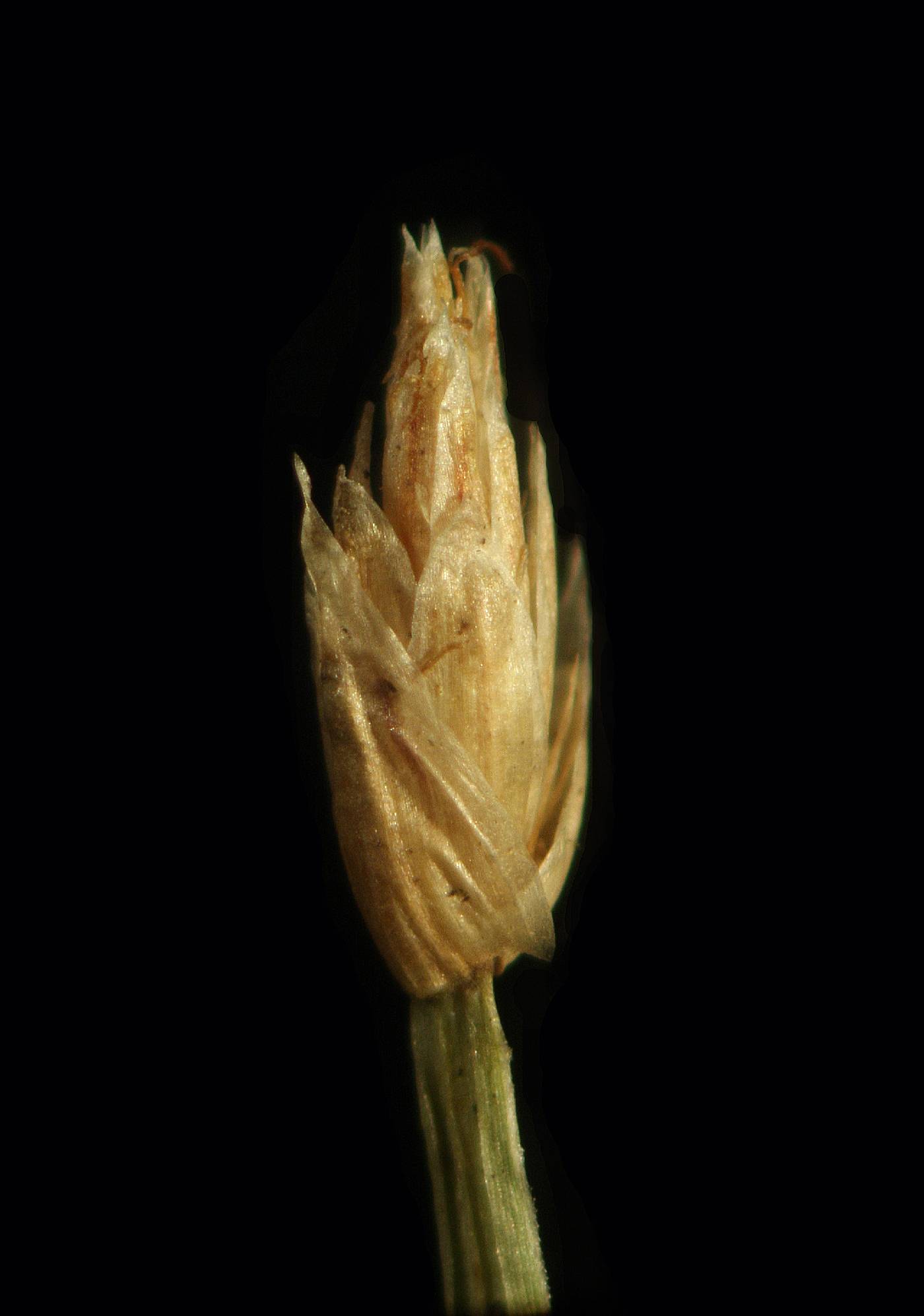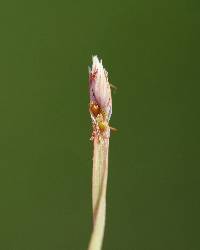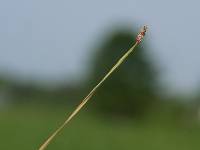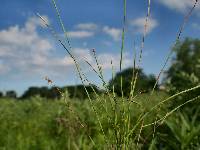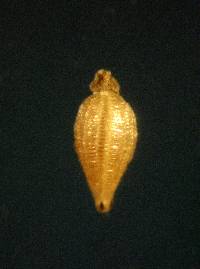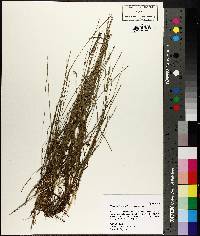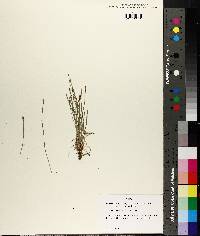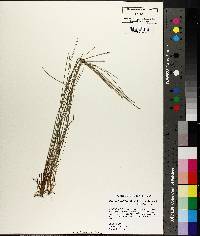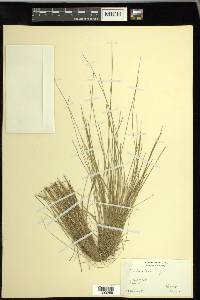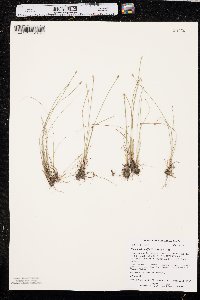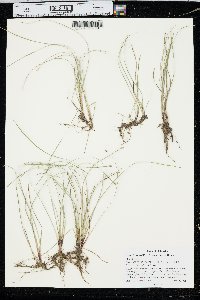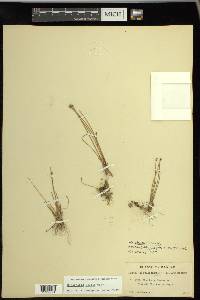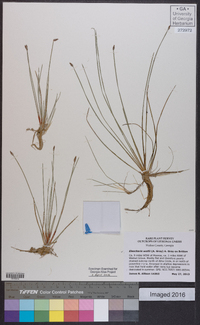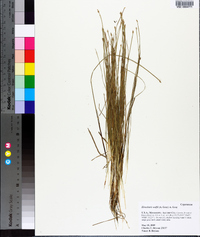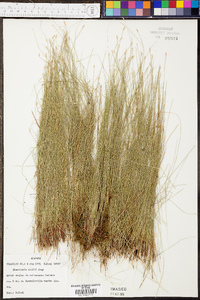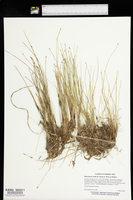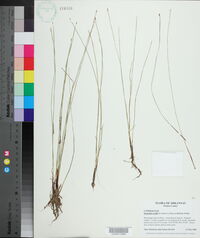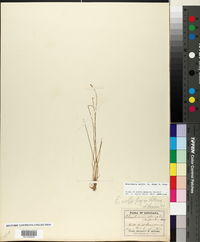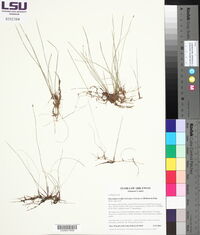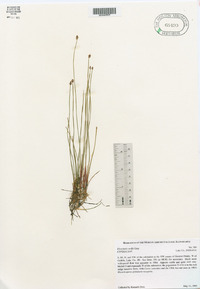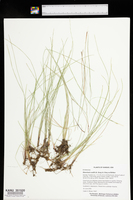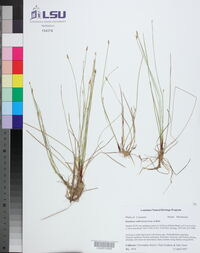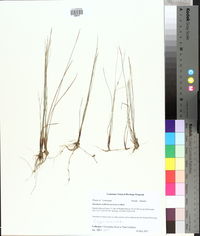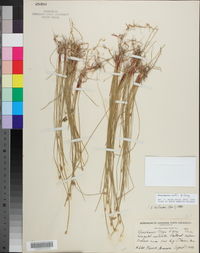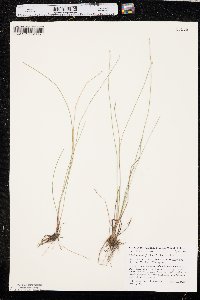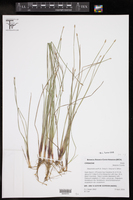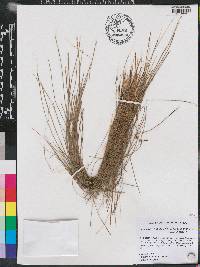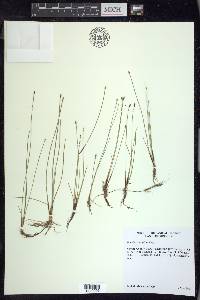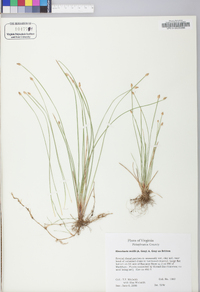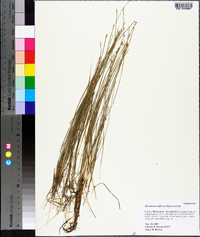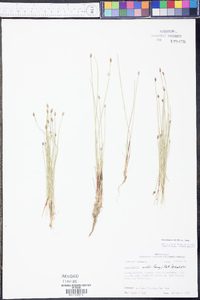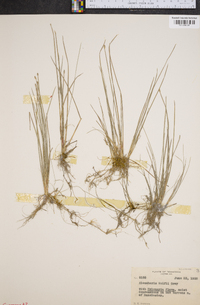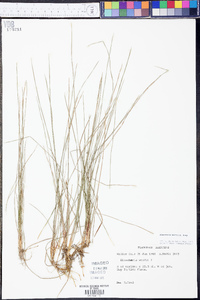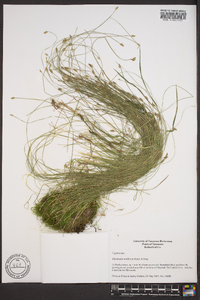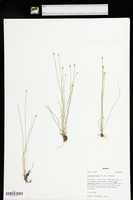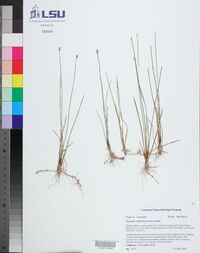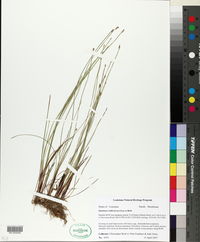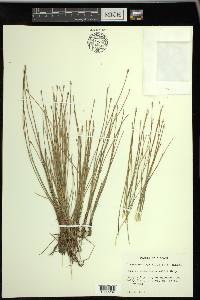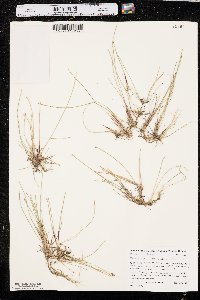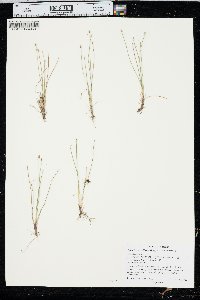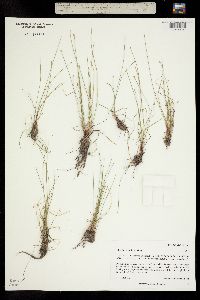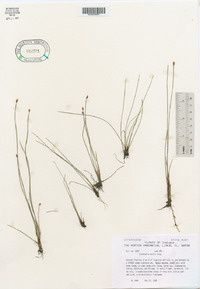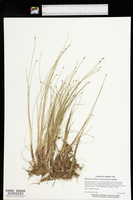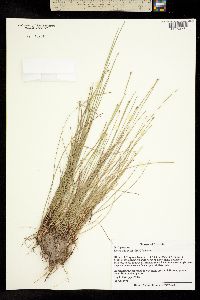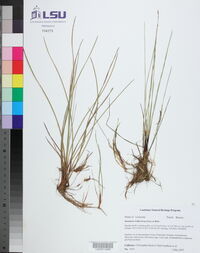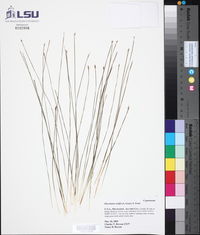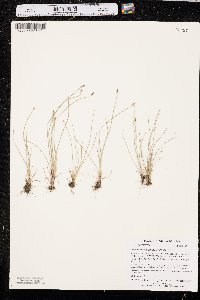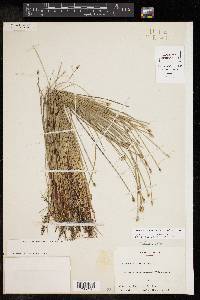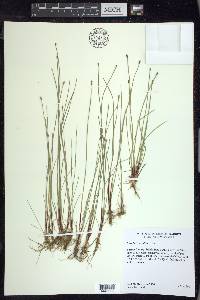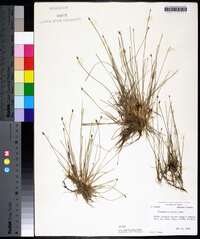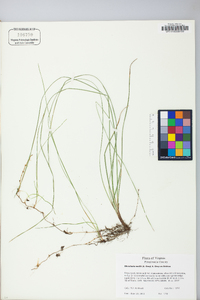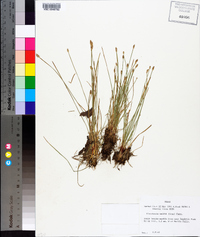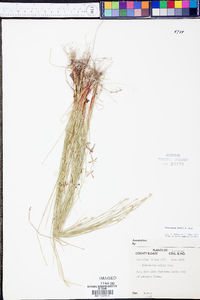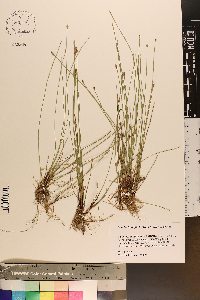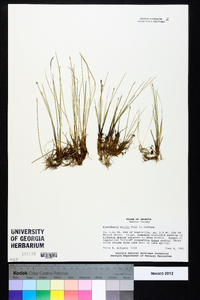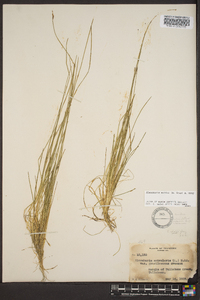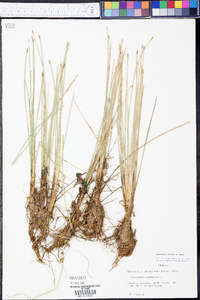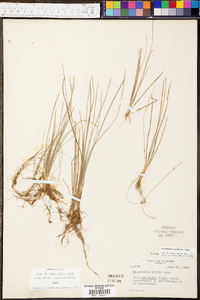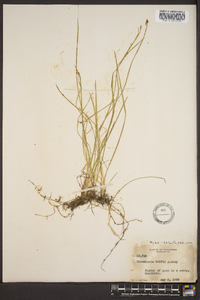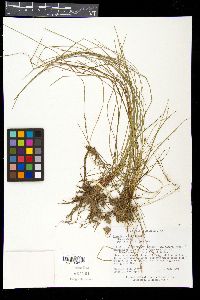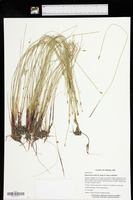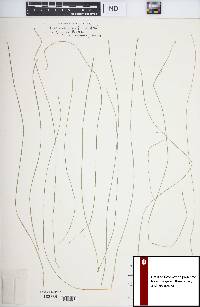
|
|
|
|
Family: Cyperaceae
Wolf's Spike-Rush, more...Wolf's spikerush
|
Plants perennial, often forming large mats; rhizomes 0.25-0.6 mm thick, internodes 1-4 cm, scales 2 mm. Culms sometimes decumbent, in same plant sides variably smooth or with 1 to few acute ridges (often nearly smooth or with 1 ridge on 1 side and several ridges on the other), greatly compressed, usually inrolled when dry, rectangular in cross section, 10-40 cm × 0.3-1.5 mm, 0.2-0.5 mm thick, firm, margins often sharply acute, margins and often 1 or more ridges minutely serrulate at 20-30X. Leaves: distal leaf sheaths persistent, red proximally, colorless or stramineous or whitish distally, slightly inflated, thickly membranous, apex acute. Spikelets ovoid or lanceoloid, 3-9 × 1.5-2.5 mm, apex acute; floral scales 15-30, 6 per mm of rachilla, orange-brown or often stramineous or colorless, midrib region stramineous or greenish, ovate-lanceolate, (2.2-)2.7-3.2 × 1.5 mm, midrib prominent, apex acute. Flowers: perianth bristles absent; anthers 1.1-1.75 mm. Achenes compressed-trigonous, with angles plus longitudinal ridges ca. 9-13, prominent, obovoid, mostly 2 times longer than wide, 0.7-0.9(-1.1) × (0.4-)0.5 mm, trabeculae 30-60, rather obscure and crowded. Tubercles brownish, pyramidal, usually depressed, 0.1-0.15 × 0.2-0.25 mm. Fruiting late spring-early summer (May-Jun). Ephemeral pools in open grasslands, oak woodlands on river terraces, limestone barrens; 10-500 m; Ala., Ark., Colo., Ill., Ind., Iowa, Kans., La., Minn., Miss., Mo., N.Y., N.Dak., Ohio, Okla., Tenn., Tex., Wis. Eleocharis wolfii is presumably extirpated from Colorado, Kansas, New York (Long Island), and Ohio. It was recently rediscovered in Wisconsin. Some literature reports (e.g. from the Great Plains) are based on misidentified specimens. I have not seen specimens to verify literature reports from Alberta, Saskatchewan, Colorado, Missouri, and Nebraska.
Perennial herb with slender rhizomes, mat-forming 10 - 40 cm tall Leaves: reduced to bladeless sheaths, basal, two per culm, margins fused and enclosing culm, reddish basally, slightly inflated, with a pointed apex, membranous. Flowers: minute, spirally arranged on the axis of the spikelet, lacking sepals and petals, bristles zero, subtended by a scale. Stamens exserted. Anthers to 1.75 mm long. Pistil one. Style three-cleft. Fruit: a one-seeded achene, pale to grayish, about 1 mm long and 0.5 mm wide, often twice as long as wide, reverse egg-shaped, compressed three-angled, with about nine to thirteen longitudinal ridges. Tubercle brownish, tiny, pyramidal, often depressed. Seed with a thin, non-adherent wall. Culm: upright, sometimes decumbent, unbranched, 10 - 40 cm long, to 1.5 mm wide and 0.5 mm thick, rectangular in cross-section, compressed, variably smooth or acutely ridged, firm, enclosed basally by two fused sheaths. Spikelets: solitary, 3 - 9 mm long, 1.5 - 2.5 mm wide, egg- or lance-shaped with a pointed apex, with 15 to 30 floral scales. Scales spirally arranged and overlapping, orangish brown or straw-colored to colorless with a straw-colored or greenish midrib, about 3 mm long and 1.5 mm wide, egg- to lance-shaped with a prominent midrib and pointed apex. Similar species: No information at this time. Flowering: May to July Habitat and ecology: Not common in the Chicago Region and only known from Cook County, Illinois and Lake County, Indiana. Wet areas. Occurence in the Chicago region: native Etymology: Eleocharis comes from the Greek words heleios, meaning "dwelling in a marsh," and charis, meaning grace. Wolfii is named after John Wolf (1821-1897), the botanist who discovered this species. Author: The Morton Arboretum Rhizomatous perennial; stems in small tufts, erect, 1-4 dm, flattened, 1-1.5 mm wide; spikelet narrowly ovoid, 4-9 mm; scales 3 mm, imbricate in several rows, lance-ovate, acute or acuminate, somewhat marked with purple-brown, with broad scarious margins and tip; basal scale empty or floriferous; bristles none; style trifid; achene obpyramidal, 0.7-1 mm, pale or gray, with several longitudinal ridges and numerous transverse lines; tubercle conic, a fourth as long. Marshes; Ind. to Alta., s. to La. and Colo.; N.Y. Gleason, Henry A. & Cronquist, Arthur J. 1991. Manual of vascular plants of northeastern United States and adjacent Canada. lxxv + 910 pp. ©The New York Botanical Garden. All rights reserved. Used by permission. From Flora of Indiana (1940) by Charles C. Deam My only specimens were found in Jefferson County in low, flat clearings about 3 1/2 miles southwest of Hanover and 3 miles southeast of Hanover. ...... Indiana Coefficient of Conservatism: C = 8 Wetland Indicator Status: OBL |
|
|
|
This project was made possible in part by the Institute of Museum and Library Services [MG-70-19-0057-19].
Powered by Symbiota

